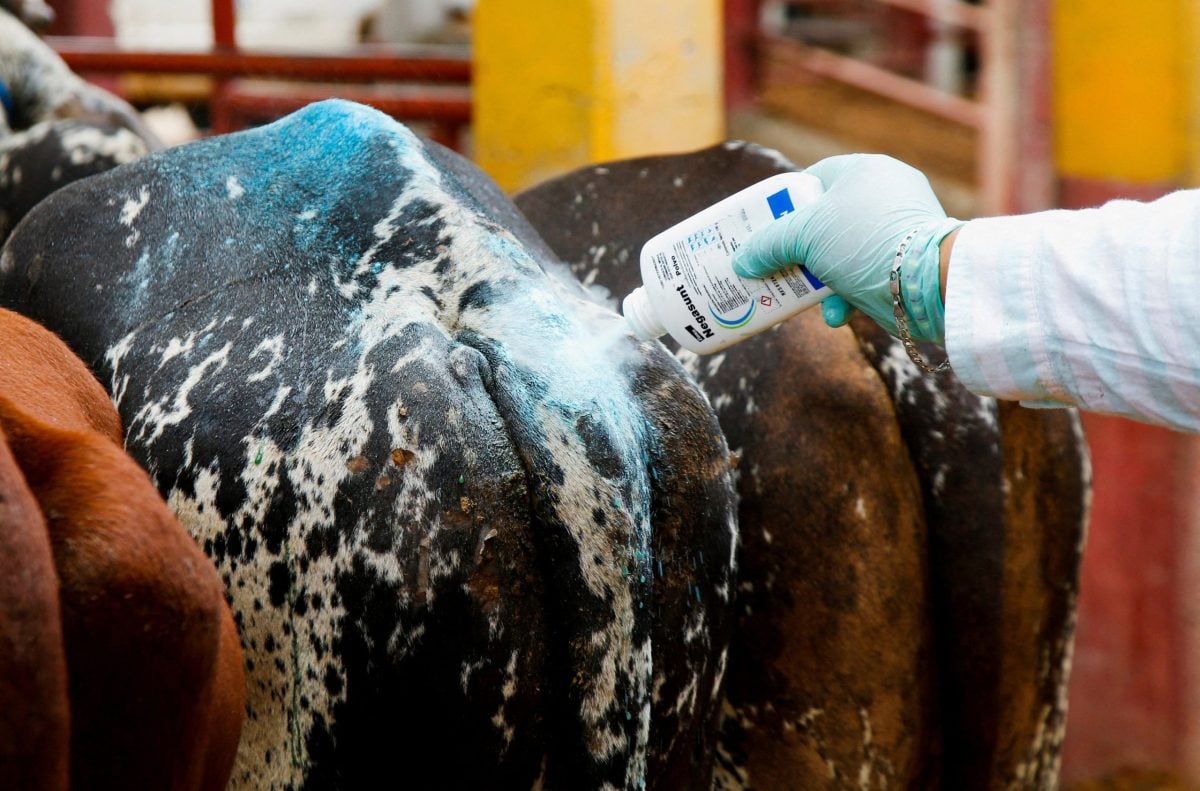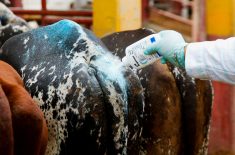Research into why radio frequency ID (RFID) tags sometimes just won’t stay put on cattle’s ears has found very cold temperatures have a “profound effect” on tag strength.
Use of RFID tags is now mandated through the Canadian Cattle Identification Agency (CCIA) for traceability of individual cattle from birth through to slaughter. Several forms of tags have CCIA approval based on the tags’ retention, readability and ability to withstand tampering.
However, a research team working with the Prairie Agricultural Machinery Institute (PAMI) has noted “frustration” among producers in getting the tags to stay put.
Read Also

Mexico agriculture secretary says still no date for restarting cattle exports to U.S.
Mexican Agriculture Minister Julio Berdegue said on Wednesday that Mexico and the United States have not yet set a date to resume Mexican cattle exports amid an outbreak of the flesh-eating screwworm parasite.
Thus, “we used an engineering approach to systematically test the mechanical strength of RFID tags to determine if all tags are the same, if some are weaker, or some are stronger,” Joy Agnew, PAMI’s project manager for ag research services at Humboldt, Sask., said in a release Tuesday.
The PAMI team tested six types of RFID tags, making sure to follow “best practices” for application such as using compatible fronts and backs (that is, from the same manufacturer), and using the correct applicator for each brand of tag.
“Much weaker”
Measuring the force needed to break the tags apart in different ways, the team found the different tag types all met the CCIA’s basic requirements for tag strength.
However, temperature, which it’s believed hasn’t been tested until now, “was shown to have a profound effect on the tags” in terms of strength and tag retention.
PAMI’s tests brought both the tag and the applicator were brought down to -30 C — then the tag was inserted and brought back up to “ambient temperature” before its strength was tested.
“We found that if the tags were inserted cold, they were much weaker than those inserted at room temperature,” said Agnew, a member of the research team studying the tags.
Furthermore, PAMI said, the tags were also more difficult to insert when cold, and broke apart “far more easily, even when back at room temperature.”
The lesson learned, PAMI said, is that it’s best to avoid tagging animals in extremely cold temperatures. Producers, if the job can’t be avoided, should keep both the tag applicator and the tags themselves warm while the tagging is taking place, PAMI recommended.
Also, Agnew said, cattle producers “need to ensure that they are using the right applicator for the right tag components,” with “no mixing and matching.”
Using one brand of applicator with another brand of tag — or mismatching the front and back of the tags — also “resulted in poor retention,” PAMI said. — AGCanada.com Network
Related stories:
RFID best kept separate from cattle auctions’ software, Dec. 6, 2011
High-tech ear tags to be put to the test, July 29, 2011
Bar-coded cattle ID tags de-listed July 1, May 29, 2010











